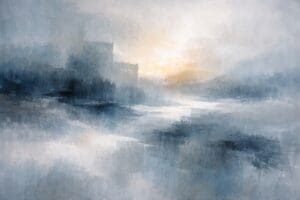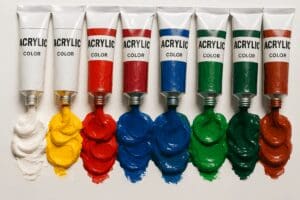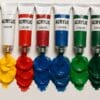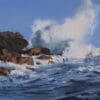Watercolor Painting 101: A Beginner’s Guide to Getting Started
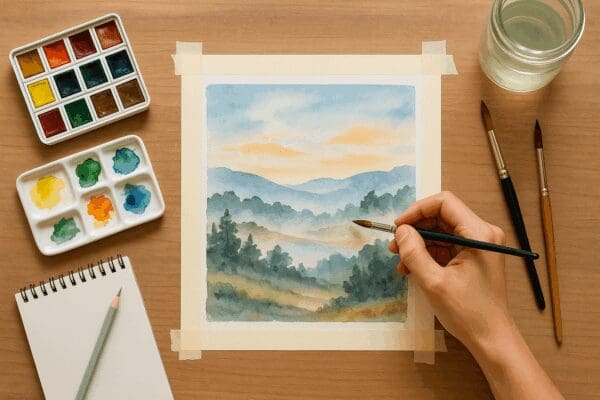
Watercolor painting is one of the most accessible and rewarding art forms available. Whether you’re just beginning your artistic journey or returning to painting after time away, watercolor offers a vibrant and fluid medium that invites experimentation and expression.
Table of Contents
- What is Watercolor Painting?
- Essential Supplies for Beginners
- Understanding Your Tools
- Basic Techniques You Should Know
- Setting Up Your Workspace
- Tips for Your First Painting Session
- Common Mistakes to Avoid
- Practising with Simple Projects
- Expanding Your Skills
- Resources & Inspiration
- Final Thoughts
1. What is Watercolor Painting?
Watercolor painting involves pigments suspended in a water-based solution. Unlike opaque mediums, watercolor relies on light reflecting through transparent layers, creating luminous, atmospheric effects. From precise realism to loose abstraction, it offers immense creative freedom.
2. Essential Supplies for Beginners
- Watercolor Paints: Choose between pan sets (compact and portable) or tube paints (richer and vibrant).
- Brushes: Start with a round brush (Size 6 or 8), a flat brush for washes, and a fine brush for detail.
- Paper: Cold-pressed (textured) is great for beginners. Use 300gsm (140 lb) paper for best results.
- Other essentials: Mixing palette, soft pencil, kneaded eraser, 2 jars of water, masking tape, and paper towels.
Tip: Artist-grade materials offer better results than student-grade, especially for color vibrancy and blending.
3. Understanding Your Tools
Paints: Artist-quality paints contain more pigment and produce brighter, cleaner colors.
Brushes: Natural hair brushes (like sable) hold more water, but quality synthetic ones are budget-friendly and reliable.
Paper: Choose 300gsm cold-pressed paper. It absorbs water well and resists warping.
4. Basic Techniques You Should Know
- Flat Wash: A smooth, even application of color.
- Graded Wash: A transition from strong to soft color.
- Wet-on-Wet: Paint onto a damp surface for soft blends.
- Wet-on-Dry: Paint onto dry paper for sharper edges.
- Dry Brush: Use minimal water for texture.
- Lifting: Remove pigment with a damp brush or tissue.
- Glazing: Layer transparent colors to build depth.
5. Setting Up Your Workspace
Find a bright, tidy space with natural light. Use masking tape to secure your paper, keep brushes and water nearby, and set the mood with calming music. Comfort and lighting are key for focus and enjoyment.
6. Tips for Your First Painting Session
- Start with simple shapes and light sketches.
- Allow layers to dry before adding detail.
- Don’t rush—enjoy the process.
- Rinse your brush often to avoid muddying colors.
7. Common Mistakes to Avoid
- Using poor quality paper—invest in 300gsm watercolor paper.
- Overworking the paint—let it flow, don’t scrub.
- Using too much water—causes buckling and puddling.
- Skipping swatches—always test your colors first.
8. Practising with Simple Projects
Here are some easy exercises to build confidence:
- Sky Wash: Blend blue into pink/orange using wet-on-wet.
- Monochrome Forest: Create a tree line using just one pigment.
- Overlapping Circles: Practice transparency and glazing.
- Simple Florals: Use loose shapes and wet-on-wet colour blends.
9. Expanding Your Skills
Once you’re confident, try:
- Negative painting (painting around a shape)
- Using salt for texture
- Masking fluid for white highlights
- Combining ink outlines with watercolor washes
Recommended Learning Platforms:
10. Resources & Inspiration
Explore hashtags like #watercolorpainting, #irishart, #artinireland, #beginnerwatercolor, #artcommunityireland.
11. Final Thoughts
Watercolor painting is not about perfection—it’s about discovery. Let yourself explore freely, enjoy the unexpected results, and most importantly, keep practicing. Every brushstroke builds your confidence and skill.
For more tips, artist showcases, and acrylic tutorials, explore the Irish Artmart Blog.
Explore more about painting and creativity at Irish Artmart.
*For collaborations, art features, or inquiries, please contact us at [email protected]. Don’t forget to follow us on Instagram, Facebook, Twitter.
Disclaimer: The views and opinions expressed in this article do not necessarily reflect the official policy or position of Irish Artmart.
Irish Artmart – Your Gateway to Artistic Excellence.
